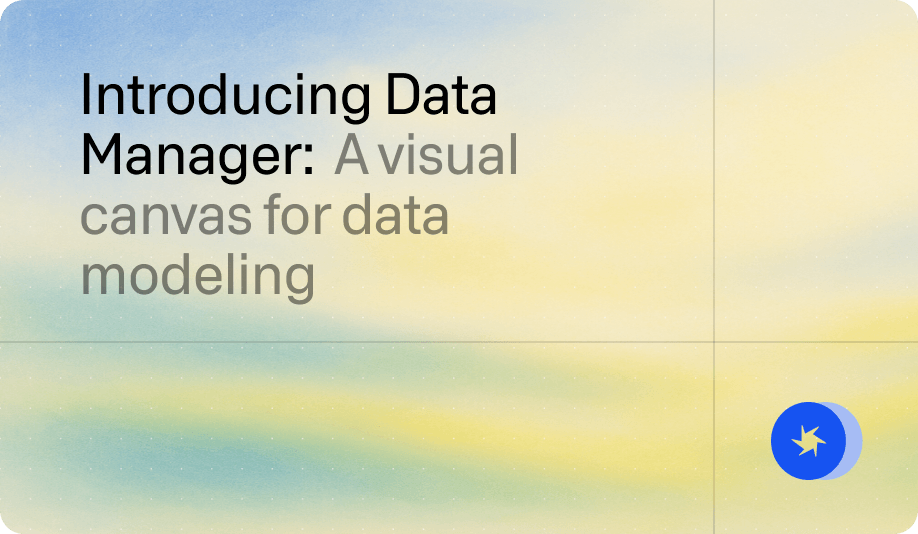Audience segmentation
Marketers spend countless hours building campaign audiences. We do our best to group customers by shared interests or engagement signals, but this process is often imperfect and requires cross-functional support:
Marketers create a ticket for the engineering team to create an audience list.
Engineers prioritize tasks based on their current workload and manually write code to perform the desired segmentation.
The two groups navigate subsequent revisions, restarting the cycle each time.
The process quickly drains team resources and holds marketers back from executing timely campaigns. The audience lists are also limited by what humans believe are the right datapoints to make correlations from and inform strategies.
AI is built for data analysis. It can analyze customer preferences, behavioral data, purchase history, and more to identify the unique relationships that humans might miss at remarkable speed. Even better: AI can understand your organizational goals to deliver relevant audience segments.
Marketers can engage with AI agents to create audiences without requiring support from engineering. Because AI agents can understand a near-infinite number of relationships between data points, they can suggest audiences that humans would have never considered building.
Consider a churn winback campaign for a cosmetics retailer and the following prompts:
Ineffective - I’m running a churn winback campaign, who should I target?
Good - We are seeking to re-engage lost customers. The goal is to drive engagement on the message we send and ideally lead to another purchase. Can you deliver a list of customers whom we should target?
Better - Suggest an audience segment for a churn winback campaign. Our goal is to drive a 20% sales increase, using a series of targeted emails as our primary channel. Suggest an ideal customer segment, focusing on customers who have purchased from us in the past but haven’t had any additional purchases in the last nine months. Deliver the list in a format that we can upload to our email marketing platform and include the product category each customer originally purchased within, as well as the specific products purchased.
By leveraging agentic audience segmentation, not only can your team launch campaigns more quickly, but the quality of the audience will be significantly higher. Through constant data and performance analysis, AI can proactively recommend segmentation adjustments, new audiences, and updates to your channel strategy — all within the interface your team is accustomed to working in every day (your composable CDP or Compound Marketing Engine).
Campaign analysis
It’s essential to analyze campaign results to improve future campaigns. Without AI, marketers manually pull campaign data and attempt to assess the factors that contributed to the campaign’s success or failure. The process takes a lot of time and inevitably misses key insights:
Marketers submit a ticket to the marketing operations team, and that request is added to a queue of similar requests.
An engineer manually gathers fragmented performance data from multiple outreach channels and then shares the data with an analyst for consolidation and analysis.
The team writes code to analyze the data, which will hopefully provide insights into campaign performance. If the data is formatted differently across channels, then the analysis is limited, and valuable insights are often missed.
By the time you’ve performed this analysis, the window of opportunity has closed for taking timely action. It’s as if a customer abandoned their online cart but made a purchase in store the next day. The marketing team would think the customer was a non-purchaser if they pulled the data on the day of cart abandonment.
When AI is fully integrated with your marketing ecosystem — your centralized data cloud connected to each of your channels and marketing tools — it can perform campaign analysis in near real-time, with full context of every campaign’s purpose and audience. It eliminates the need for engineering support and provides marketers with self-service capabilities to extract campaign insights more quickly.
This empowers teams to make iterations while campaigns are still active. As a campaign is running, AI can analyze performance data to suggest what is and isn’t working, and deliver real-time recommendations to marketers.
Consider these prompt examples if the cosmetics retailer were to assess its churn winback campaign results:
Ineffective - How is our churn winback campaign performing?
Good - What elements of the churn winback campaign have been successful, based on the customers who have made purchases?
Better - What can we do to improve our churn winback campaign based on its results so far? Please consider audience-level performance and if our initial audience needs adjustment. Analyze our channel mix to determine what is most effective and suggest changes we can make. Recommend a few simple experiments we could implement in our next iteration of the campaign that could validate your suggestions.
Experimentation at scale
After suggesting audiences and journeys, AI can guide you in performing A/B tests to further understand the nuances between individual customers — and deliver highly personalized messages that will drive your intended results.
AI can orchestrate tests that involve every campaign variable, spanning channel, timing, message, and visuals. Ongoing testing helps marketers learn about individual customers, enabling them to deliver the one-to-one experience we have strived to fulfill.
The cosmetics retailer could partner with AI for experimentation using prompts like the following:
Ineffective - Help me conduct an A/B test for our churn winback campaign.
Good - Based on the churn winback campaign results so far, can you suggest two distinct audience segments we can approach through emails with a different subject line?
Better - We want to improve our churn winback campaign results through A/B testing. We plan to send a follow-up email with a different subject line for two groups. Can you suggest two audience segments we should approach, and explain what type of subject line will resonate with each group?





